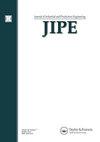A green inventory model considering environmental emissions under carbon tax, cap-and-offset, and cap-and-trade regulations
IF 4.6
Q2 ENGINEERING, INDUSTRIAL
Journal of Industrial and Production Engineering
Pub Date : 2023-08-13
DOI:10.1080/21681015.2023.2242377
引用次数: 1
Abstract
ABSTRACT This study assesses green technology investment as well as carbon pricing regulations, including carbon tax, cap-and-offset, and cap-and-trade, to control carbon emissions from retailer inventory. A green inventory model is studied due to a lack of investigation on the simultaneous effect of green technology investment and variable demand. Prior studies neglected the demand pattern that is sensitive to product quality, pricing, and the promotional effort of a green inventory model. This study contributes guidance to retailer managers on the optimal price and replenishment cycle given a carbon pricing regulation and green technology investment plan. This study maximizes the total profit using the classical optimization technique. Two cases are involved in representing the inventory model with and without green technology investment. The carbon pricing regulations were studied. Essential theoretical derivations have been provided to show the concavity of the anticipated model. The results prove the advantages of green technology investment and carbon pricing implementation. The numerical example and sensitivity analysis are shown, and the cap-and-trade policy works efficiently within constraints to curb carbon emissions. The manager established an optimal selling price and the replenishment cycle period by forecasting the amount of investment in green technology and some transportation cost variables. Graphical abstract考虑碳税、总量控制与抵消以及总量控制与交易法规下环境排放的绿色库存模型
本研究评估了绿色技术投资和碳定价法规,包括碳税、限额与抵消和限额与交易,以控制零售商库存的碳排放。由于缺乏对绿色技术投资和可变需求同时作用的研究,本文研究了绿色库存模型。先前的研究忽略了对产品质量、定价和绿色库存模型的促销努力敏感的需求模式。本研究对零售商在碳定价规制和绿色技术投资计划下的最优价格和补货周期具有指导意义。本研究利用经典优化技术实现总利润最大化。分别用两种情况来表示有绿色技术投资和没有绿色技术投资的库存模型。对碳定价法规进行了研究。提供了必要的理论推导来证明预期模型的凹性。研究结果证明了绿色技术投资和碳定价的优势。通过数值算例和敏感性分析表明,限额与交易政策在约束条件下有效地抑制了碳排放。管理者通过预测绿色技术的投资额和一些运输成本变量,确定了最优销售价格和补货周期。图形抽象
本文章由计算机程序翻译,如有差异,请以英文原文为准。
求助全文
约1分钟内获得全文
求助全文
来源期刊

Journal of Industrial and Production Engineering
ENGINEERING, INDUSTRIAL-
CiteScore
7.50
自引率
6.70%
发文量
21
 求助内容:
求助内容: 应助结果提醒方式:
应助结果提醒方式:


